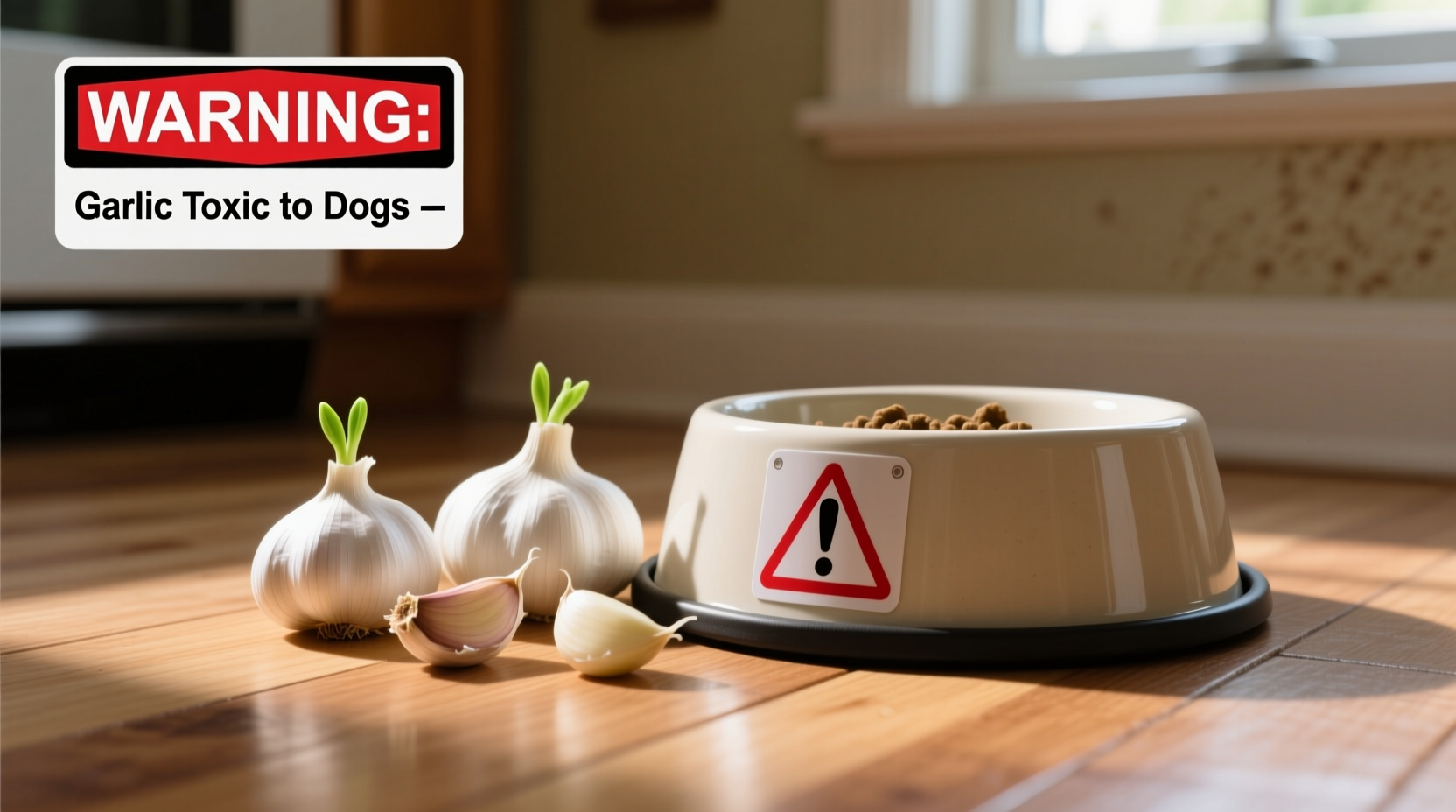Many dog owners unknowingly put their pets at risk by sharing human foods containing garlic. This common kitchen ingredient poses a serious threat that requires immediate attention when ingested. Understanding garlic toxicity levels, recognizing early symptoms, and knowing emergency protocols can save your dog's life.
Why Garlic Is Dangerous for Dogs: The Science Behind the Toxicity
Garlic contains N-propyl disulfide, a compound that damages red blood cells in dogs through oxidative stress. Unlike humans, dogs lack sufficient enzymes to process these sulfur compounds safely. This leads to hemolytic anemia - where red blood cells rupture prematurely, reducing oxygen delivery throughout the body.
Research published in the Journal of Veterinary Emergency and Critical Care confirms garlic is five times more toxic to dogs than onions. The toxic components remain potent whether garlic is raw, cooked, powdered, or dehydrated. Even garlic supplements marketed for human health pose significant risks to canine companions.
| Dog Weight | Toxic Garlic Amount | Immediate Action Required |
|---|---|---|
| 10 lbs (4.5 kg) | 5 grams (1 clove) | Call vet immediately |
| 30 lbs (13.6 kg) | 15-30 grams (3-6 cloves) | Seek emergency care |
| 60 lbs (27 kg) | 30-60 grams (6-12 cloves) | Urgent veterinary attention |
| Any amount | Garlic powder (more concentrated) | Immediate consultation |
This toxicity threshold comes from clinical data collected by the ASPCA Animal Poison Control Center, which handles over 200,000 pet poisoning cases annually. Their research shows toxicity depends on both quantity and frequency of exposure - repeated small doses can be as dangerous as a single large ingestion.
Recognizing Garlic Poisoning: Symptoms and Timeline
Garlic toxicity symptoms often appear 2-4 days after ingestion, creating dangerous delays in treatment. Early signs include:
- Excessive drooling and nausea
- Vomiting and diarrhea
- Abdominal pain and loss of appetite
- Lethargy and weakness
As hemolysis progresses, more severe symptoms develop:
- Pale or yellow-tinged gums (jaundice)
- Rapid breathing and heart rate
- Dark red or brown urine (hemoglobinuria)
- Collapse from oxygen deprivation
The Merck Veterinary Manual documents cases where dogs developed severe anemia after consuming garlic-containing baby food or homemade broth. The delayed symptom onset means damage occurs before owners recognize the problem.
Emergency Response: What to Do If Your Dog Ate Garlic
If your dog ingested garlic, follow these critical steps:
- Don't induce vomiting without professional guidance - this can cause additional complications
- Contact your veterinarian immediately or call ASPCA Animal Poison Control (888-426-4435)
- Have this information ready: dog's weight, amount consumed, time of ingestion, garlic form (raw, powder, cooked)
- Bring the packaging if commercial product was involved
- Follow professional instructions for immediate care while traveling to the clinic
Veterinarians typically administer activated charcoal to absorb toxins if ingestion was recent. For advanced cases, treatment may include IV fluids, oxygen therapy, and blood transfusions. The Veterinary Information Network reports recovery takes 1-2 weeks with proper treatment, but untreated cases can be fatal.

Preventing Garlic Exposure: Practical Safety Measures
Protect your dog with these proactive strategies:
- Store garlic securely in cabinets inaccessible to curious dogs
- Check ingredient labels on dog treats and supplements for garlic derivatives
- Avoid sharing human foods containing garlic, including sauces, dressings, and seasonings
- Educate family members about garlic dangers, especially children who might share food
- Use dog-safe alternatives like small amounts of parsley for freshening breath
Remember that garlic powder and garlic salt contain concentrated toxins - just 1/8 teaspoon of garlic powder equals one whole clove. Many commercial products like garlic bread, pizza, and seasoned meats pose hidden risks. The American Kennel Club warns that some homemade dog food recipes mistakenly include garlic as a "health supplement" - a dangerous misconception.
Common Misconceptions About Garlic and Dogs
Several dangerous myths persist in pet communities:
- "Small amounts are safe" - No safe threshold exists; cumulative exposure causes damage
- "Cooking destroys the toxin" - Heat doesn't eliminate N-propyl disulfide
- "Garlic prevents fleas" - No scientific evidence supports this; safer alternatives exist
- "My dog ate garlic before with no issues" - Damage accumulates silently over time
Veterinary toxicologists emphasize that individual dogs show varying sensitivity based on breed, age, and health status. Japanese breeds like Shiba Inus and Akita show heightened vulnerability according to research in Veterinary and Human Toxicology.
Frequently Asked Questions About Garlic Toxicity in Dogs
How soon after eating garlic do dogs show symptoms?
Symptoms typically appear 2-4 days after ingestion, though initial gastrointestinal signs like vomiting may occur within hours. The delayed onset of hemolytic anemia makes early intervention critical before visible symptoms emerge.
Is garlic powder more dangerous than fresh garlic for dogs?
Yes, garlic powder is significantly more concentrated and dangerous. Approximately 1/8 teaspoon of garlic powder equals one whole garlic clove. Powdered garlic appears in many commercial products like dog treats and seasonings, creating hidden exposure risks.
Can dogs recover from garlic poisoning?
Most dogs recover fully with prompt veterinary treatment, which may include IV fluids, oxygen therapy, and blood transfusions in severe cases. Recovery typically takes 1-2 weeks, but untreated cases can be fatal due to severe anemia and organ damage.
Are certain dog breeds more sensitive to garlic toxicity?
Yes, Japanese breeds including Shiba Inus and Akitas show increased sensitivity to garlic toxicity. Puppies, senior dogs, and dogs with pre-existing health conditions also face higher risks. However, all dogs remain vulnerable regardless of breed.











 浙公网安备
33010002000092号
浙公网安备
33010002000092号 浙B2-20120091-4
浙B2-20120091-4